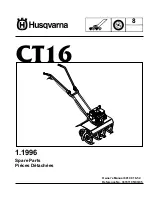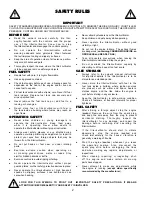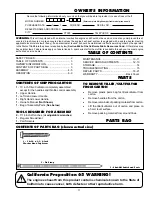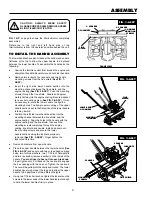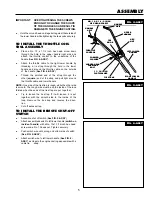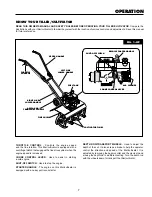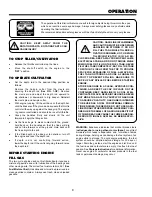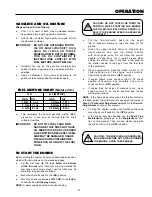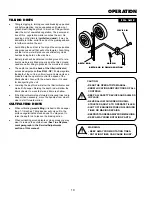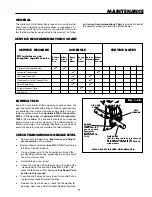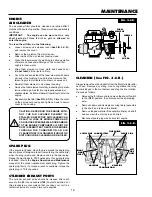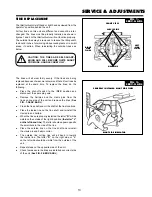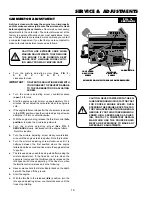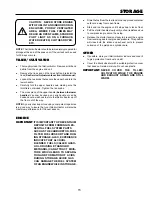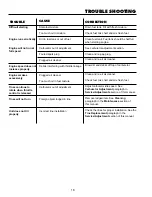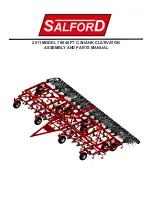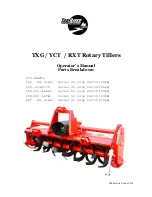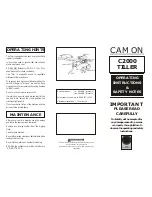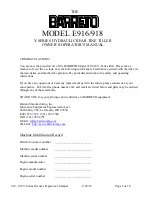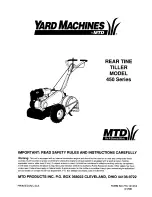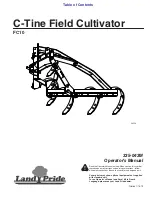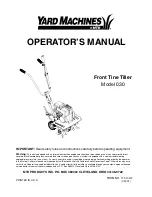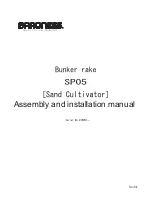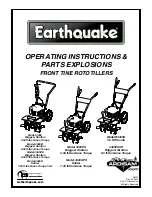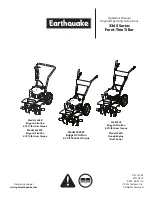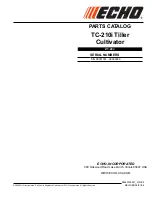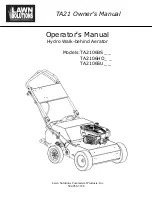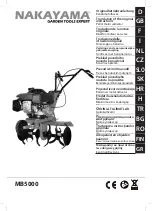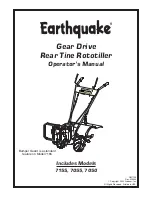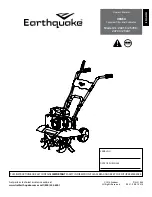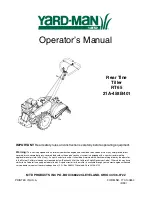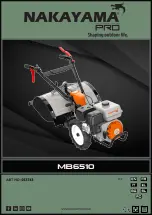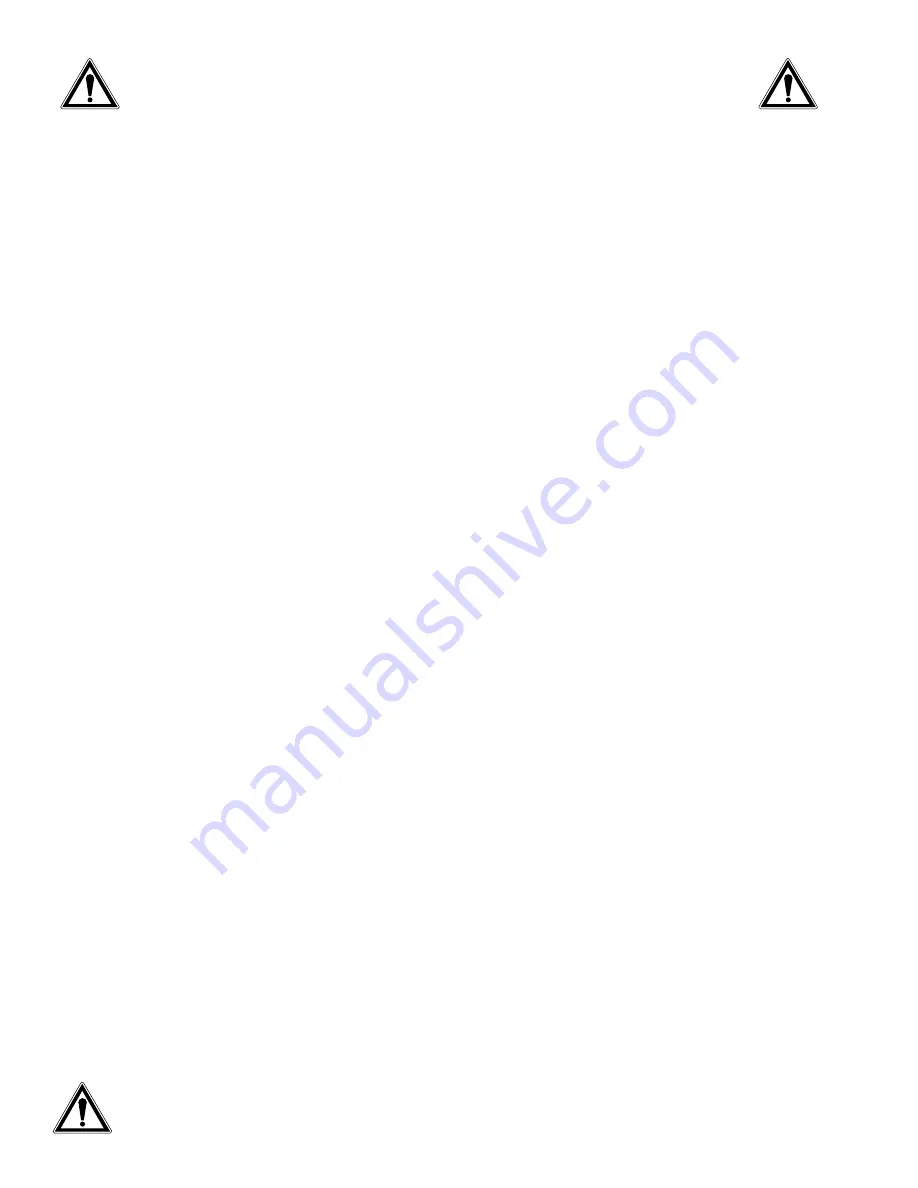
2
SAFETY RULES
THESE SAFETY RULES ARE FOR YOUR PROTECTION. READ THEM CAREFULLY
LOOK FOR THIS SYMBOL TO POINT OUT IMPORTANT SAFETY PRECAUTIONS. IT MEANS
ATTENTION!!! BECOME ALERT!!! YOUR SAFETY IS INVOLVED.
IMPORTANT
SAFETY STANDARDS REQUIRE OPERATOR PRESENCE CONTROLS TO MINIMIZE THE RISK OF INJURY. YOUR TILLER/
CULTIVATOR IS EQUIPPED WITH SUCH CONTROLS. DO NOT ATTEMPT TO DEFEAT THE FUNCTION OF THE OPERATOR
PRESENCE CONTROL UNDER ANY CIRCUMSTANCES.
BEFORE USE
●
Read the owner’s manual carefully. Be thor-
oughly familiar with the controls and the proper
use of the tiller/cultivator. Know how to stop
the tiller/cultivator and disengage the controls quickly.
●
Do not operate the tiller/cultivator without
wearing adequate outer garments. Wear footwear
that will improve footing on slippery surfaces.
●
Keep the area of operation clear of all persons, particu-
larly small children and pets.
●
Thoroughly inspect the area where the tiller/ cultivator
is to be used and remove all foreign objects.
FUEL SAFETY
●
Handle fuel with care; it is highly flammable.
●
Use an approved container.
●
Check fuel supply before each use, allowing space for
expansion as the heat of the engine and/or sun can
cause fuel to expand.
●
Fill fuel tank outdoors with extreme care. Never fill fuel
tank indoors. Replace fuel tank cap securely and
wipe up spilled fuel.
●
Never remove the fuel tank cap or add fuel to a
running or hot engine.
●
Never store fuel or tiller/cultivator with fuel in
the tank inside a building where fumes may reach an
open flame.
OPERATING SAFETY
●
Never allow children or young teenagers to
operate the tiller/cultivator. Keep them away
while it is operating. Never allow adults to
operate the tiller/cultivator without proper instruction.
●
Always wear safety glasses or eye shields during
operation or while performing an adjustment or repair to
protect your eyes from foreign objects that may be
thrown from the tiller/cultivator.
●
Do not put hands or feet near or under rotating
parts.
●
Exercise extreme caution when operating on
or crossing gravel drives, walks, or roads. Stay
alert for hidden hazards or traffic.
●
Exercise caution to avoid slipping or falling.
●
Never operate the tiller/cultivator without proper
guards, plates, or other safety protective devices in place.
●
Never operate the tiller/cultivator at high transport
speeds on slippery surfaces. Look behind and use
care when backing.
●
Never allow bystanders near the tiller/cultivator.
●
Keep children and pets away while operating.
●
Never operate the tiller/cultivator without good
visibility or light.
●
Do not run the engine indoors. The exhaust fumes
are dangerous (containing CARBON MONOXIDE, an
ODORLESS and DEADLY GAS).
●
Take all possible precautions when leaving the
tiller/cultivator unattended. Stop the engine.
●
Do not overload the tiller/cultivator capacity by
attempting to till too deep at too fast a rate.
SAFE STORAGE
●
Always refer to the owner's manual instructions
for important details if the tiller/cultivator is to be
stored for an extended period.
●
Never store the tiller/cultivator with fuel in the
fuel tank inside a building where ignition sources
are present such as water and space heaters,
clothes dryers, and the like. Allow the engine to
cool before storing in any enclosure.
●
Keep the tiller/cultivator in safe working condition.
Check all fasteners at frequent intervals for proper
tightness.
FUEL SAFETY
●
After striking a foreign object, stop the engine
(motor). Remove the wire from the spark plug,
and keep the wire away from the plug to prevent
accidental starting. Thoroughly inspect the
tiller/cultivator for any damage, and repair the
damage before restarting and operating the
tiller/cultivator.
●
If the tiller/cultivator should start to vibrate
abnormally, stop the engine ( motor) and
check immediately for the cause. Vibration is
generally a warning of trouble.
●
Stop the engine (motor ) whenever you leave
the operating position. Also, disconnect the
spark plug wire before unclogging the tines
and when making any repairs, adjustments, or
inspections.
●
When cleaning, repairing, or inspecting, shut-
off the engine and make certain all moving
parts have stopped.
●
Never attempt to make any adjustments while
the engine is running (except when specifically
recommended by the manufacturer).

